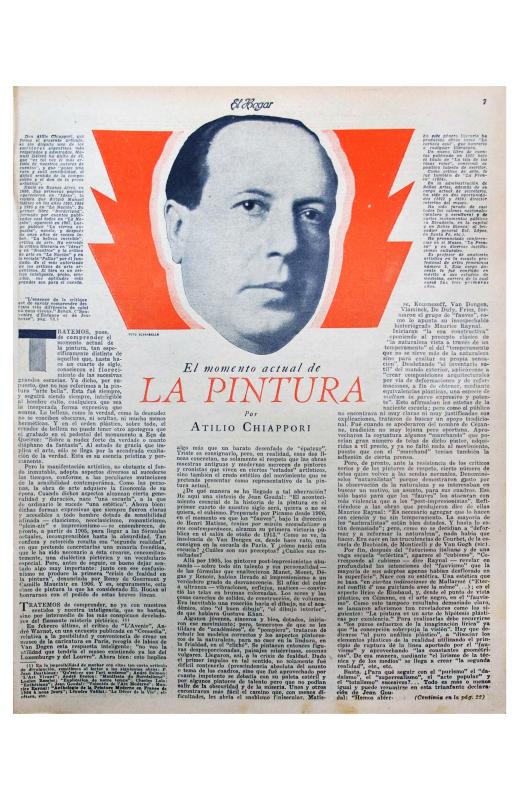In the 1920s the modernization of the arts in Argentina was going through one its most consequential stages. Following the breakthrough of the artists linked to the magazine Martín Fierro (Emilio Pettoruti, Xul Solar, and Norah Borges), Alfredo Guttero and the Artistas del Pueblo [People’s Artists] (with their social political engraving), as well as the local artists who had been educated in Paris (Aquiles Badi, Horacio Butler, Héctor Basaldúa, Raquel Forner, Alfredo Bigati, Antonio Berni, and Lino Enea Spilimbergo) emerged on the arts scene toward the end of the decade. During this modernization process, opposition arose to those artists of “tradition” who practiced a Post-Impressionist naturalism.
This document is part of a group that concerns the open debate between “tradition” and “modernity” in Argentinean art that took place in 1930. Atilio Chiappori, director of the Museo Nacional de Bellas Artes, was a defender of the figurative aesthetic known as “national art.” His position was made manifest in an article that had appeared days before in the same publication: “El momento actual de la pintura” [The Current Moment in Painting] (See doc. no. 733960).
In this document, the Argentinean sculptor Pedro Zonza Briano (1886–1941) shares his thoughts as they apply to sculpture.
The modern artists, headed by Horacio Butler, published an open letter that criticized Chiappori’s article (see doc. no. 790317), just as Antonio Berni had done in an article that strongly criticized both positions, “Cada uno a su lugar” [To each his own place] (see doc. no. 732982).


